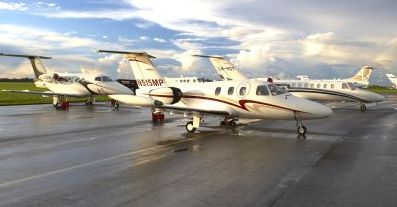4 OCTOBER 2010
YOUR WORDS
Readers are invited to add their comments to any story. Click on the article to see and add.
BTN DISTRIBUTION
BTN also goes out by email every Sunday night at midnight (UK time). To view this edition click here.
- ON THE SOAP BOX: Edwin Brenninkmeyer, Principal of Oriens Advisors
- Abu Dhabi executive airport
- African advance for Star Alliance
- Air cargo record fines
- AirAsia X to Haneda
- Charlotte gets European flights
- David Higgins appointed as chief executive of Network Rail
- German departure tax starts
- InterContinental Hotels Group boutique brand
- Key breakthrough at Holiday Inn
- Manchester to Iraq
- oneworld expands to Russia
- Pendolino gets a new look
- Quiet in Quito
- Ride the Skytrain at Miami
- Rio for Alitalia plus bag
- South Africa to Australia upgrades
- Transatlantic deal
- Tripoli from the UK
- Virgin Hotels for the United States
- World's largest airline gets bigger
- ON TOUR: Light Jets Europe
- MOTORING UPDATE by Ted Wilkinson
- HAPPY TALK - A great alternative to body scanners at airports!
The Business Travel News
PO Box 758
Edgware HA8 4QF
United Kingdom
info@btnews.co.uk
© 2022 Business Travel News Ltd.
Abu Dhabi executive airport
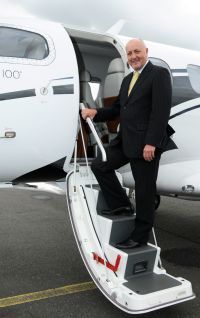 Al Bateen Executive Airport, situated in the heart of the United Arab Emirates (UAE) capital of Abu Dhabi, has launched a major upgrade programme. It is the only dedicated executive airport in the region. Originally built in the 1960s, Al Bateen had only handled military traffic since Abu Dhabi International Airport, located 20 miles outside the city centre, was opened in 1982, but in June 2009 it was granted new civil airport status.
Al Bateen Executive Airport, situated in the heart of the United Arab Emirates (UAE) capital of Abu Dhabi, has launched a major upgrade programme. It is the only dedicated executive airport in the region. Originally built in the 1960s, Al Bateen had only handled military traffic since Abu Dhabi International Airport, located 20 miles outside the city centre, was opened in 1982, but in June 2009 it was granted new civil airport status.
A multi-million dollar plan is underway including an ILS precision approach capability, new hangars and MRO facilities, plus a hotel on site. During the first quarter of 2010, Al Bateen experienced a 30% increase in movements. The UAE has overtaken Saudi Arabia with the highest concentration of business jets in the Middle East, hosting 38% of the region’s fleet.
To head up this new investment Al Bateen has recruited Steve Jones, currently Managing Director of Oxford Airport, who joins in mid-November. Steve has been at Oxford for ten years and is credited with its major development as a business airport. He was previously with BAe at its Chester HS 125 plant since 1974. www.adac.com
AirAsia X to Haneda
 The Malaysian-based long haul, budget airline AirAsia X is to introduce a three times weekly service from Kuala Lumpur to Tokyo Haneda on 9 October. This is the 12th destination for the airline after Australia, China, India, Korea, Taiwan and Europe.
The Malaysian-based long haul, budget airline AirAsia X is to introduce a three times weekly service from Kuala Lumpur to Tokyo Haneda on 9 October. This is the 12th destination for the airline after Australia, China, India, Korea, Taiwan and Europe.
Flight time is around 6½ hours. The airline is unique in that the premium cabin is in the centre of the aircraft. In this section the flat-bed seats are to standard Business Class specifications of 20" width, 60" pitch with a length of 77" in full recline position. The seats feature universal power sockets, adjustable headrests and built-in personal utilities including a tray table, drink holder, reading light and privacy screen.
The airline uses the low cost terminal at Kuala Lumpur where passengers can transfer on to sister airline Air Asia’s large South East Asian route network. www.airasia.com
German departure tax starts
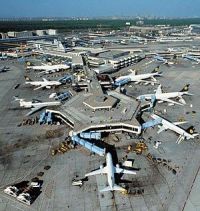 Departing airline passengers out of Germany will have to pay a new tax on flights booked from 1 January 2011 with immediate effect. The Federal Transport Minister admitted that the announcement was designed to stop travellers taking advantage by booking ahead. Transit passengers will not be punished (another loss to UK airlines – see last week's COMMENT). The tax is subject to Parliamentary approval.
Departing airline passengers out of Germany will have to pay a new tax on flights booked from 1 January 2011 with immediate effect. The Federal Transport Minister admitted that the announcement was designed to stop travellers taking advantage by booking ahead. Transit passengers will not be punished (another loss to UK airlines – see last week's COMMENT). The tax is subject to Parliamentary approval.
Travellers will pay €8 for flights within Europe, €25 to medium haul destinations and €45 to long haul destinations regardless of the class. On German domestic flights VAT is levied too (€9.52 in total). www.airberlin.com
Manchester to Iraq
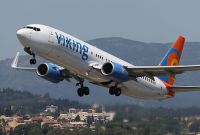 Viking Hellas, will operate weekly throughout the winter from Manchester to the Iraqi cities of Erbil (EBL) and Sulaimaniyah (ISU) via its base in Athens. Using an A320 aircraft the airline will fly every Wednesday from Manchester to Sulamaniyah and every Friday from Manchester to Erbil.
Viking Hellas, will operate weekly throughout the winter from Manchester to the Iraqi cities of Erbil (EBL) and Sulaimaniyah (ISU) via its base in Athens. Using an A320 aircraft the airline will fly every Wednesday from Manchester to Sulamaniyah and every Friday from Manchester to Erbil.
The airline also offers weekly scheduled services from Erbil to Frankfurt (via Athens) every Tuesday and Najaf to Stockholm (via Athens) once a week leaving Najaf on Thursday. www.flyviking.gr
Quiet in Quito
 Quito, Ecuador, seems to be quiet after last week's attempted coupe with the international airport working normally.
Quito, Ecuador, seems to be quiet after last week's attempted coupe with the international airport working normally.
A British tourist has reported to AERBT on Sunday that his Continental flight from Houston was on time, the luggage came through as he passed the friendly immigration people and he was in his downtown hotel within 45 minutes of touching down, with very little traffic late at night. www.ecuadortouristboard.com
South Africa to Australia upgrades
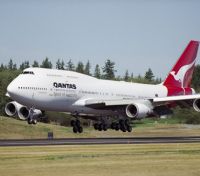 Qantas has gone daily on its Johannesburg to Sydney service operated by a four-class Boeing 747-400.
Qantas has gone daily on its Johannesburg to Sydney service operated by a four-class Boeing 747-400.
This new schedule complements the airline’s daily codeshare services between Perth and Johannesburg with South African Airways, who also codeshare on the Sydney – Johannesburg routes.
Qantas continues to be the only carrier between Sydney and South Africa. The new service will also deliver much needed additional freight opportunities for exporters throughout Australia and Asia on what is traditionally a sector limited by weight restrictions. www.qantas.com www.flysaa.com
Virgin Hotels for the United States
 Sir Richard Branson is launching Virgin Hotels in the US, aiming to spend US$500m in the next three years. A new website has been set up to court property owners and developers with the tagline: ‘Fancy getting into bed with Virgin?’
Sir Richard Branson is launching Virgin Hotels in the US, aiming to spend US$500m in the next three years. A new website has been set up to court property owners and developers with the tagline: ‘Fancy getting into bed with Virgin?’
The new venture is seeking quality 4-star hotels with 150-400 rooms in major North American cities, such as New York, San Francisco, Miami, Boston and Washington DC. Virgin Hotels will operate either as a third-party manager, partner with ownership or acquire properties directly. It aims to expand to other regions around the world once it is established in North America.
President and Chief Operating Officer of Virgin Hotels is Raul Leal, who ran boutique chain Desires Hotels, with Anthony Marino who has directed North America strategy for the Virgin Group since 2006 on the executive board. www.virginhotels.com
MOTORING UPDATE by Ted Wilkinson
Mazda6 2.2D 5-door Sport
Even Stronger Appeal With Latest Mazda6
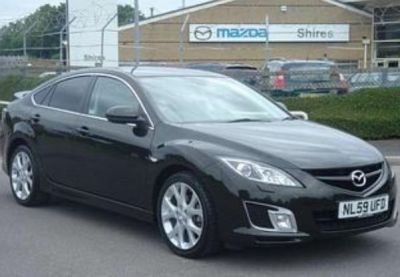 About a year ago, when testing an estate version of Mazda’s executive sector Mazda6 in estate car form, I suggested that the model had been kicking at the door of the premium car market.
About a year ago, when testing an estate version of Mazda’s executive sector Mazda6 in estate car form, I suggested that the model had been kicking at the door of the premium car market.
Now, after experiencing the recently upgraded model in 5-door Sport form, I think that Mazda has more than prised that tight fitting door well and truly open, the more aggressive styling clearly having a proven sales attraction for those upwardly mobile executives seeking to break out of the usual pack of continental offerings.
This is a very fresh modern car, its new generation range launched at the beginning of 2009 and just this summer subjected to significant across the board improvements, both mechanically to enhance performance, economy and cleaner emissions, and with a better ride and handling, more advanced equipment and an enlarged options menu.
There is an extensive but clearly defined choice of no fewer than 22 models with capacity from 1.8-litre up to 2.5 litres and including a choice of three 2.2-litre diesel units. Though pricing has eased up a little with these latest improvements the range remains good value.
My test car was the 2.2D Sport powered by the top 178 bhp engine that I found combined the right qualities of performance, driver satisfaction and though, actually a few bhp down on the earlier engine provided better economy, even better refinement and was claimed to have improved performance with a top speed of 135 mph, a brisk 0 to 62 mph (100 kph) acceleration time of 8.7 seconds and a combined consumption figure of a massive 52.3 mpg.
The emissions figure is also down by 5 g/km, thus qualifying for Euro 5 status.
The previous model rode so well that it is hard to identify any improvement, perhaps a better ability to cope with our deteriorating road surfaces though I suspect there is a more responsive feel through all the control functions that should be appreciated by discerning drivers.
That said it is a very easy driver, with a slick acting 6-speed sensibly ratioed manual gearbox with cruise control (as yet a 5-speed automatic unit can only be specified with the petrol engines) and powerfully smooth braking action.
The Mazda6 already had a good range of sensible safety equipment including the proximity warning lights in the front pillars that warned about that car in the blind area just as it overtook and now there are smart turn indicators, emergency stop signalling, front and rear parking sensors, Hill Hold Assist and swivelling AFS headlights.
Mazda has not gone overboard to create this flagship Sport version, from the outside car spotters would see the Sports grille, special alloy wheels, privacy glass side windows and the BiXenon headlights with cleaning system while inside there are aluminium foot pedals, a Bose 8-speaker sound system, partial leather trim, black out instrument dials with amber/blue illumination and heated front seats.
Only omission for a car of this class is satellite navigation.
I sat for several minutes in the test car appreciating the comfort behind the steering wheel, the logical interior planning, the quality of the materials involved and the overall build quality which was hard to better. The conclusion is that the Mazda6 has started to develop an identifiable character of the calibre necessary to make it a frequent visitor to the corporate car park.
Rivals include: BMW 3 Series, Alfa Romeo 159, Mercedes-Benz C Class, Audi A4, Toyota Avensis.
STAR RATINGS (out of 10)
Performance 9
Handling 9
Transmission 9
Noise 9
Economy 9
Ride and Comfort 9
Accommodation 9
Styling 9
Brakes 9
Finish 9
TOTAL: 90
Price: From £22,795 – as tested £23,455.
NOTES FROM TED WILKINSON’S DIARY
AUDI: Announced at the recent UK Audi Road Show of 2011 models that Audi has toppled its two major German rivals as Britain’s best selling premium brand car. Audi has also claimed to offer values in the class with a 42% residual, close on twice its nearest rivals. www.audi.co.uk
CITROEN: The French car maker will be premiering a host of models at the Paris Motor Show including C4 and DS4 models plus a concept C-Zero model. www.citroen.co.uk
INFINITI: Starring at the opening of the luxury Infiniti brand’s new Sales Centre at 77 Piccadilly, will be the awesome 592 bhp Essence model. Offered in both petrol and diesel V6 forms it will be joined next spring by a hybrid version. www.infiniti.co.uk
JAGUAR: 75 years of Jaguar cars! When Jaguar chief William (later Sir) Lyons unveiled the new SS Jaguar 2.5 he asked guests at the launch to guess the price of the luxury sports saloon – average was £632 – he astounded them by saying it would cost a mere £385! www.jaguar.com
LEXUS: The 2011 Lexus ISF has been revised to allow the 417 bhp V8 engine to comply with Euro 5 emissions. Other innovations include LED daylight lighting. www.lexus.co.uk
MERCEDES-BENZ: London’s iconic black cab taxi cab has at long last moved into the 21st century with a state of the art, approved, cab being recently launched by Mercedes-Benz. Based on the highly rated Vito van/MPV range the cab has been developed in the UK to feature all-wheel steering and a comprehensive specification of safety/braking systems, air conditioning, sliding doors plus very user-friendly disabled and wheel chair user facility. Core price around £30,000. www2.mercedes-benz.co.uk
SAAB: The newly independent Saab company has announced that it will be concentrating its production and developments in Sweden. They are also working on an electric vehicle project after recently developing the power unit for the new Saab 9-3 range to produce a class leading 119 g/km. www.saab.co.uk
ON THE SOAP BOX: Edwin Brenninkmeyer, Principal of Oriens Advisors
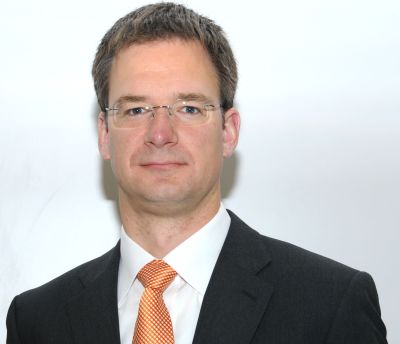 Edwin Brenninkmeyer, a licensed pilot, spent his early career in the retail industry and it was his frustration with European scheduled air travel that led him into the world of private jets.
Edwin Brenninkmeyer, a licensed pilot, spent his early career in the retail industry and it was his frustration with European scheduled air travel that led him into the world of private jets.
At Oriens, we are often asked what the primary reason is for the failure of so many nascent air taxi businesses. Most people who have studied the industry agree that scale is key, and often it is the process of reaching that scale that has proven challenging. We have seen some companies own or lease aircraft from the start, with corresponding huge cash flow burns. Other companies managed to find funding in the pre-recession days and were able to scale from very early in their operations, and then failed.
The reason?
Most commonly because the entrepreneur has a poor understanding of who, and more importantly where, their customer is. They become so involved in the day-to-day complexities of managing a highly regulated company before they really understand what their customer wants and they soon find that they are either dependent on brokers for customers they do not own, or they are too slow generating their own customers.
Brokers certainly are a quick win. We have seen very high utilisations among air taxis that rely heavily on brokers but typically, these clients are already savvy business aviation users and an over-reliance on the broker results in the operator becoming a commodity player, rather than a true, branded player. Anecdotally some brokers discourage strong branding by operators.
Increasingly, the flag-carrier airlines are experiencing their already low economy margins on short haul routes being squeezed by the low cost carriers as their once loyal Business Class customers seek more cost effective solutions, in the absence of real added value. Today’s Business Class is often simply more expensive economy service, with perhaps a bit more room, a bite to eat and an option to rebook, but still the same reduced schedules, long waits, unpleasant and time consuming security procedures and inconvenient hub and spoke offering of the back half of the plane. If we really believe what the airlines tell us, this “new Business Class” market represents a €24bn opportunity in Europe. Contrast this with today’s light jet European market of approximately €1bn. Unless we educate a far wider customer group, we will be missing an opportunity – and I doubt that this education will include champagne, leather and wood veneer.
The most effective “elevator pitch” for any corporate CEO/CFO is to ask him if he is interested in saving an annual €100,000 of travel productivity for one department of three, in his Siena office. That is the saving we identified for a corporate client with a regular travel need from Siena to Basel. It is unlikely that such a saving would be realisable on a London – Paris route that is already well and cost-effectively served with more traditional transport.
And here’s the point – the entrepreneur, who has the passion and vision, should be the one who makes those initial sales and works with the customer to identify a travel need and heal that pain. This is time-consuming and tiring and the time to be doing this is not once the company is already in the middle of fund-raising and working to obtain an AOC but well before.
Having identified a travel need among potential customers, the next step is not to start the business and fund-raise but to form an excellent relationship with the airport identified from stage one as being a strategic base. Understand that the airport must also be a commercial success and unless you can convince the airport that you will bring it more business with your small aircraft, with their small fuel uplifts and fees, you cannot expect to be greeted with commercially attractive terms. Also, airports can be an invaluable resource for local demographic knowledge and a knowledge of further local business to target. Finally, airports have more political sway than a start-up operator and if you have them as an ally, you will have better access to local government which in turn will facilitate lobbying, customer education and therefore acquisition.
What about traditional advertising such as flyers, magazines, direct mail, email and so on? Hopefully by now it is obvious that there are more effective ways of directly acquiring customers that require more effort but less cash to implement. Once you have established a well-known brand that customers understand and know how to use, these methods are effective at reminding customers that you’re out there and competitive but I would suggest that there is no light jet, air taxi operating company in Europe who is already that far.
Perhaps the ultimate way to educate a maximum number of customers in minimum time and cost is via technology and we must watch this space. For example, let us consider the corporate travel department who is used to booking three executives on their weekly trip to Basel from Siena via airline through Florence, Zurich and all the taxis, trains and overnight accommodation required to complete the journey. That travel department will likely use commonly available software to make the airline request via Florence and Zurich and will be presented with a price and a journey time. If this software can be re-programmed to include business aviation and multiple other airports surrounding those served by the airlines, the travel department is now faced with a new alternative route direct from Siena to Basel which will likely be approximately €200 dearer but will be available at the traveller’s schedule, direct fast and saves the hotel.
If the fledgling operator forms alliances with other operators around Europe, very quickly a network of operators will form across Europe, feeding into this technology.
Customer education is so important. It may sound obvious but I make no apologies for that, we have seen too many failures because of insufficient attention to this, and to cash flow. Consequently we believe that it is one of the key factors in the success of a business and should be a principal focus for any start up company.
Edwin Brenninkmeyer
www.oriensadvisors.com
African advance for Star Alliance
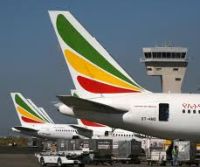 Ethiopian Airlines is to become the third Star Alliance member carrier on the African Continent, joining Egyptair and South African Airways. It will add five new countries (Chad, Congo, Djibouti, Mali and Niger) and 24 African destinations to the Star Alliance Network.
Ethiopian Airlines is to become the third Star Alliance member carrier on the African Continent, joining Egyptair and South African Airways. It will add five new countries (Chad, Congo, Djibouti, Mali and Niger) and 24 African destinations to the Star Alliance Network.
Ethiopian Airlines, one of the largest and fastest growing airlines in Africa, made its maiden flight to Cairo in 1946. With the recent addition of flight services to Pointe Noire, Ethiopian provides services to 37 cities in Africa and a total of 58 international destinations spanning throughout four continents. www.ethiopianairlines.com www.staralliance.com
Charlotte gets European flights
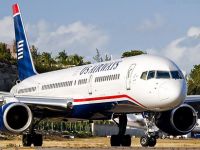 US Airways says that it will expand its international presence at its Charlotte, North Carolina, hub when the airline begins a daily non-stop seasonal summer service between Charlotte Douglas International Airport and Madrid and Dublin in May 2011.
US Airways says that it will expand its international presence at its Charlotte, North Carolina, hub when the airline begins a daily non-stop seasonal summer service between Charlotte Douglas International Airport and Madrid and Dublin in May 2011.
The new flights will complement US Airways' daily, non-stop year-round service to both destinations from Philadelphia, the airline's main gateway to Europe. Madrid will be served by a Boeing B767-200 ER aircraft with seating for 18 in Envoy, US Airways' international Business Class, and 186 in the main cabin. Dublin is operated with a Boeing B757 with seating for 12 in Envoy and 164 in the main cabin. US Airways is a member of Star Alliance. www.usairways.com
InterContinental Hotels Group boutique brand
 Hotel Indigo, the upscale boutique brand of InterContinental Hotels Group (IHG), has announced another 13 new hotels in key cities around the world over the next few years. The new properties are in Asia, Europe and the Americas, starting in Europe with two hotels opening in the spring of 2011 in Glasgow and Liverpool, followed in summer 2011 hotels in Vancouver and New Orleans.
Hotel Indigo, the upscale boutique brand of InterContinental Hotels Group (IHG), has announced another 13 new hotels in key cities around the world over the next few years. The new properties are in Asia, Europe and the Americas, starting in Europe with two hotels opening in the spring of 2011 in Glasgow and Liverpool, followed in summer 2011 hotels in Vancouver and New Orleans.
In 2012 hotels in Madrid and Newcastle will open, with Mexico City and New York Bryant Park being opened by year end 2012. More will follow in Bangkok in 2013, Lisbon in 2014 and Hong Kong in 2016. Hotel Indigo now has 36 hotels with a further 57 being planned in the future. www.hotelindigo.com
oneworld expands to Russia
 Russia’s leading domestic carrier, S7 Airlines, will officially become part of oneworld from 15 November, expanding its network throughout Russia and the rest of the Commonwealth of Independent States (CIS).
Russia’s leading domestic carrier, S7 Airlines, will officially become part of oneworld from 15 November, expanding its network throughout Russia and the rest of the Commonwealth of Independent States (CIS).
S7’s Russian domestic market is the world’s largest country in terms of land mass, the ninth most populous and with the eighth biggest gross domestic product. The airline's network, covers 90 destinations and 28 countries, including 45 points in Russia and some 25 destinations in other parts of the CIS. 55 destinations in the region will be added to the alliance map, and nine countries, in Armenia, Azerbaijan, Georgia, Kazakhstan, Kyrgyzstan, Moldova, Tajikistan, Turkmenistan and Uzbekistan. www.s7.ru
Ride the Skytrain at Miami
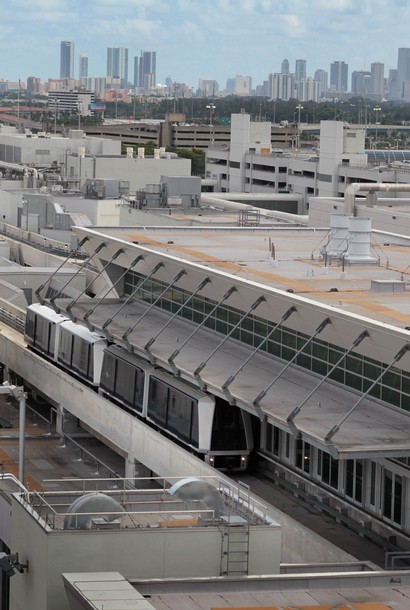 Miami now has a Skytrain on Concourse D at the international airport. The terminal has 60 gates and is a mile in length. It would take you over 20 minutes to walk from end to end. The service runs every three minutes so if you miss a train you will not have to wait long for the next.
Miami now has a Skytrain on Concourse D at the international airport. The terminal has 60 gates and is a mile in length. It would take you over 20 minutes to walk from end to end. The service runs every three minutes so if you miss a train you will not have to wait long for the next.
Also there are stops in the terminal every quarter mile. Each station has separate areas for domestic and international passengers. Each train has four carriages, two for domestic and two for international passengers. The train will carry up to 9,000 passengers an hour and actually runs on the roof of Concourse D.
On one side of the train you get views of the runways, ramps and aircraft, on the other Biscayne Bay. Work on Concourse D is still ongoing and is expected to be finished in 2011. www.miami-airport.com
Transatlantic deal
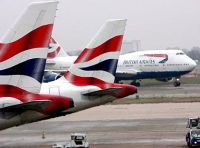 British Airways has signed a transatlantic tie-up with American Airlines and Iberia that allows the airlines to share passengers and costs on flights between the European Union, Switzerland and Norway and the US, Canada and Mexico.
British Airways has signed a transatlantic tie-up with American Airlines and Iberia that allows the airlines to share passengers and costs on flights between the European Union, Switzerland and Norway and the US, Canada and Mexico.
The deal comes in the form of a “revenue share agreement”, which BA says will “provide customers with greater access to discounted fares, more convenient connections and better access to the airlines' global network.” It also says the arrangement would also allow oneworld to “compete on an equal footing” with other airline alliances that have received approval for similar transatlantic ventures.
Virgin Atlantic has vigorously opposed the undertaking which said it would create a "monster monopoly". www.ba.com
World's largest airline gets bigger
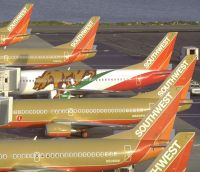 Southwest Airlines is to buy rival airline AirTran Airways for US$1.4bn. Southwest, the prototype for all other low cost carriers, is the largest airline in the world by number of passengers carried per year. AirTran was created in 1997 after a reverse take-over of Valujet, an airline whose name had been tarnished following a fatal crash in the Miami swamps.
Southwest Airlines is to buy rival airline AirTran Airways for US$1.4bn. Southwest, the prototype for all other low cost carriers, is the largest airline in the world by number of passengers carried per year. AirTran was created in 1997 after a reverse take-over of Valujet, an airline whose name had been tarnished following a fatal crash in the Miami swamps.
The purchase will increase Southwest’s network, giving it presence in and out of Atlanta for the first time. The deal will also see Southwest expand in key markets, New York LaGuardia, Boston Logan, plus Washington/Baltimore and Ronald Reagan National. The purchase may slow plans to develop international long haul services in the future, possibly to Europe. Its headquarters are at Dallas Love Field. www.southwest.com
HAPPY TALK - A great alternative to body scanners at airports!
The Israelis are developing an airport security device that eliminates the privacy concerns that come with full-body scanners at the airports.
It’s a booth you can step into that will not X-ray you, but will detonate any explosive device you may be concealing. They see this as a win-win for everyone. No racial profiling and it is fair to all and sundry. It also would eliminate the costs of a long and expensive trial. Justice would be swift. Case closed!
You're in the airport terminal and you hear a muffled explosion.
Shortly thereafter an announcement comes over the PA system.
"Attention standby passengers — we now have a seat available on flight number 123.
Shalom!"
United Continental Holdings, formerly UAL Corporation, announced on Friday that it had has merged with Continental Airlines, Inc., and that Continental Airlines and United Air Lines, Inc. are now wholly owned subsidiaries of United Continental Holdings, Inc with the common stock of United Continental Holdings, Inc trading on the New York Stock Exchange.
Air cargo record fines
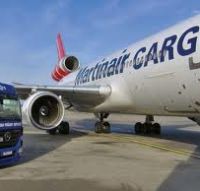 Air France-KLM and Martinair face a claim for up to €500m (£430.8m) from European companies over allegedly fixing the price of air cargo. A law firm representing the claimants estimated that the total damages could exceed that amount once money for the harm suffered since 2000 is taken into account. Claims Funding International (CFI) has served a writ on Air France/KLM for what could be a record cartel damages case.
Air France-KLM and Martinair face a claim for up to €500m (£430.8m) from European companies over allegedly fixing the price of air cargo. A law firm representing the claimants estimated that the total damages could exceed that amount once money for the harm suffered since 2000 is taken into account. Claims Funding International (CFI) has served a writ on Air France/KLM for what could be a record cartel damages case.
CFI said there were several hundred claimants in the action from 11 EU countries, and numerous industries including the pharmaceutical, automotive, electronics, food and fashion sectors. www.claimsfunding.eu
David Higgins appointed as chief executive of Network Rail
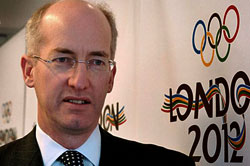 David Higgins, currently Chief Executive of the Olympic Delivery Authority, has been appointed Chief Executive of Network Rail from February 2011.
David Higgins, currently Chief Executive of the Olympic Delivery Authority, has been appointed Chief Executive of Network Rail from February 2011.
Mr Higgins is currently a Non-Executive Director of Network Rail and will continue in that role until he takes up his new position next year.
Iain Coucher, the current Chief Executive of Network Rail, is stepping down at the end of October and Director, Asset Management Peter Henderson will become Acting Chief Executive until February 2011. www.networkrail.co.uk
Key breakthrough at Holiday Inn
 InterContinental Hotels Group has introduced a door-key pilot scheme at the Holiday Inn & Suites Chicago O'Hare Rosemont and Holiday Inn Express Houston Downtown that may well become the standard for hotels around the world. Guests will have the option to “enrol” for MobileKey via the email sent prior to their check-in date or at the front desk.
InterContinental Hotels Group has introduced a door-key pilot scheme at the Holiday Inn & Suites Chicago O'Hare Rosemont and Holiday Inn Express Houston Downtown that may well become the standard for hotels around the world. Guests will have the option to “enrol” for MobileKey via the email sent prior to their check-in date or at the front desk.
OpenWays, the company that created the system, uses text messaging (SMS) to securely deliver an encrypted tone to the right user anywhere in the world. Installation of the technology at hotels involves a simple upgrade to all existing room locks. The solution is compatible with the latest smartphones and every cell phone worldwide as well as all the major electronic-locking systems and access-control systems. It invites each guest via email to "enrol" for the mobile room key service before their check-in date.
When the guest arrives at the hotel, the guest can bypass the front desk, go directly to the room, and via cell phone open the door lock. www.innovationcenter.ihg.com
Pendolino gets a new look
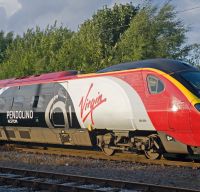 Alstom and Virgin Trains have launched ‘Alstom Pendolino’, a new look for one of the 52 high-speed tilting trains serving the West Coast Main Line. This is in recognition of the successful partnership between the two companies, established in 1999.
Alstom and Virgin Trains have launched ‘Alstom Pendolino’, a new look for one of the 52 high-speed tilting trains serving the West Coast Main Line. This is in recognition of the successful partnership between the two companies, established in 1999.
The fleet, built and maintained by Alstom, is one of the most intensively used in the world, with 47 trains in service every day, covering over 16.5m miles per year. Each train averages 1,100 miles per day in service. www.virgintrains.co.uk
Rio for Alitalia plus bag
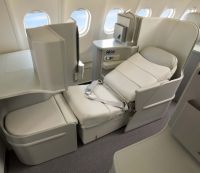 Alitalia is to fly non-stop from Rome to Rio de Janeiro initially three times a week from next June, and stepping up to four in July. The airline already operates daily to Sao Paulo. A three-class Airbus A330 will operate the service.
Alitalia is to fly non-stop from Rome to Rio de Janeiro initially three times a week from next June, and stepping up to four in July. The airline already operates daily to Sao Paulo. A three-class Airbus A330 will operate the service.
The airline has also introduced a new long haul baggage policy bringing it into line with most other international airlines. Maximum weight in Economy Class is now 23kg for a single bag whilst Premium Economy customers are allowed two bags.
Following a successful testing phase, Alitalia has also introduced a new baggage delivery service, called “Door to Door”, for passengers travelling on Italian domestic flights. It offers home collection of the baggage and delivery at the chosen address. Included in the service is on-line baggage tracking by phone or SMS – and confirmation of baggage delivery via SMS. www.alitalia.co.uk
Tripoli from the UK
 bmi is to launch a daily service from London to Tripoli from 1 December. It introduced a Heathrow – Cairo service just 18 months ago. A thaw in UK/Libyan relations, with added business contacts, is thought to be behind the move. British Airways has operated to the capital Tripoli since 1999.
bmi is to launch a daily service from London to Tripoli from 1 December. It introduced a Heathrow – Cairo service just 18 months ago. A thaw in UK/Libyan relations, with added business contacts, is thought to be behind the move. British Airways has operated to the capital Tripoli since 1999.
Libya is also keen to expand its tourism market as the country attempts to rehabilitate its international reputation following the bombing of Pan Am flight 103 over Lockerbie in 1988, which killed all 243 passengers. However, relations have been strained over the last year following the release by the Scottish Government of the only man ever convicted of the bombing, Abdelbaset al Megrahi, on compassionate grounds. www.flybmi.com
ON TOUR: Light Jets Europe
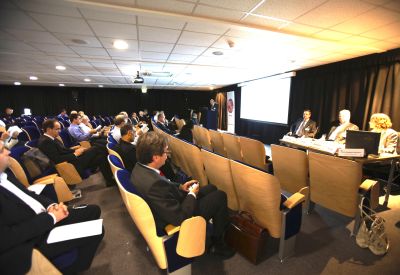 Edwin Brenninkmeyer, CEO of UK-based Oriens Advisors is a busy man. Not only has he held forth as AERBT’s ON THE SOAPBOX luminary for the month of October but he was very much the star of MIU Events’ 4th annual Light Jets Europe conference held at Oxford Airport.
Edwin Brenninkmeyer, CEO of UK-based Oriens Advisors is a busy man. Not only has he held forth as AERBT’s ON THE SOAPBOX luminary for the month of October but he was very much the star of MIU Events’ 4th annual Light Jets Europe conference held at Oxford Airport.
Speaking to the 100-strong delegates Mr Brenninkmeyer posed the question:
“Will entry level business jets become the future new Business Class?” He said citing Lufthansa, Swiss, Qatar Airways, Delta and now British Airways’ and its newly announced partnership with CitationAir in the US as its private jet partner. “It is a feasible and growing new trend among the legacy carriers.”
Also advocating this new business model was Lars Welender from Ventana Aviation, highlighting that passengers are becoming increasingly frustrated with traditional hub and spoke airline services. Added to that, Business Class services on short haul routes are increasingly being dumbed down as legacy carriers face increasing competition from the low cost carriers, several of whom such as Vueling and Air Berlin are adapting their product to attract more business clientele. Legacy carriers are being squeezed all round. They want to keep their premium passengers loyal, so this is an interesting offer for them to explore, delegates heard.
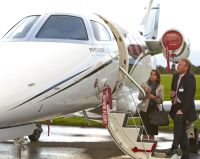 The new generation of light jets (far less expensive than chartering larger private jets) can complement the LCC/legacy/regional carrier matrix and make a real difference to business travellers’ lives. “One in three marriages ends in divorce,” said Edwin, suggesting that VLJs can play a big part in restoring family life. It was even voiced that Ryanair may like to look at such an idea for their business travellers who regularly arrive at their remote European airports. If they can get in to them that is. For while EBAA advocates the use of secondary airports to further grow business aviation, the restrictive performance of the VLJ is such that many airfields in Europe can’t actually accommodate them, because their runways are too short.
The new generation of light jets (far less expensive than chartering larger private jets) can complement the LCC/legacy/regional carrier matrix and make a real difference to business travellers’ lives. “One in three marriages ends in divorce,” said Edwin, suggesting that VLJs can play a big part in restoring family life. It was even voiced that Ryanair may like to look at such an idea for their business travellers who regularly arrive at their remote European airports. If they can get in to them that is. For while EBAA advocates the use of secondary airports to further grow business aviation, the restrictive performance of the VLJ is such that many airfields in Europe can’t actually accommodate them, because their runways are too short.
For while EBAA advocates the use of secondary airports to further grow business aviation, the restrictive performance of the VLJ is such that many airfields in Europe can’t actually accommodate them, because their runways are too short. Very few of the 2,500 small airports in Europe have the facilities and runway length to accommodate these new light jets, with their limited braking systems. The Cessna Mustang needs at least 4.100ft/1,250 m landing distance if a runway is wet and the Embraer Phenom needs at least 4,750 ft/1,372 m. Airports such as Gloucestershire in the UK, St Tropez La Mole, Egelelsbach (Frankfurt), Tousses (France) all have runways which are too short for VLJs if the wind is in the wrong direction or it's wet. Cannes is also restricted to a certain few light jets. Surprisingly, many larger business jets and regional airliners have better landing performance.
James Dillon-Godfray, Business Development Director at Oxford Airport added that there is no logic in operating these jets (which are charged out at about £1,500 an hour) where the hourly variable operating costs at the premier business airports with no runway restrictions such as Nice and Farnborough are up to £600 in landing fees, or more.
 While the Light Jet market certainly hasn’t darkened the skies over Europe with several operators falling at the first hurdle, or not even getting off the ground (JetBird, Jet Republic, DayJet, Blikk Air, to name but a few) there was a word of caution from Alex Hendriks, Principal Advisor to Eurocontrol’s Air Traffic Management Director. According to the latest Eurocontrol traffic projections capacity constraints for the anticipated growing numbers of very light jets (VLJs) will be at airports, rather than in the sky.
While the Light Jet market certainly hasn’t darkened the skies over Europe with several operators falling at the first hurdle, or not even getting off the ground (JetBird, Jet Republic, DayJet, Blikk Air, to name but a few) there was a word of caution from Alex Hendriks, Principal Advisor to Eurocontrol’s Air Traffic Management Director. According to the latest Eurocontrol traffic projections capacity constraints for the anticipated growing numbers of very light jets (VLJs) will be at airports, rather than in the sky.
By 2030 Europe’s existing airports could have a capacity shortfall equivalent to around 6,500 flights per day and as many as 50% of all flights could face delays as a consequence. The new generation VLJs can avoid this restriction by ensuring they have performance-based navigation tools, such as Vnav approaches, he suggested.
Customer knowledge was another common theme and “knowing your client” is essential remarked David Fletcher, CEO of FlairJet , Europe’s first Phenom 100 charter operator. FlairJet, which has achieved operating profit within its first five months of operation, has demonstrated that a light jet operation can be sustainable as long as costs are carefully monitored, customer networks maximised and personnel skills are utilised to best effect. However, Glen Heavens MD of Synergy Aviation argued that due to operating costs and expected low pricing by clients it remains a perpetual challenge to build a scalable business.
Light Jets Europe will take place again next year at Oxford from September 22-23 September. In the Gulf area Al Bateen Airport, which is ramping up its movements, will be the venue for the debut Private Aviation Symposium organised by MIU Events in March 2011.
Thanks to Jane Stanbury and Alison Chambers of Emerald Media for the article www.emeraldmedia.co.uk
Photos by Paul Cordwell www.miuevents.com
